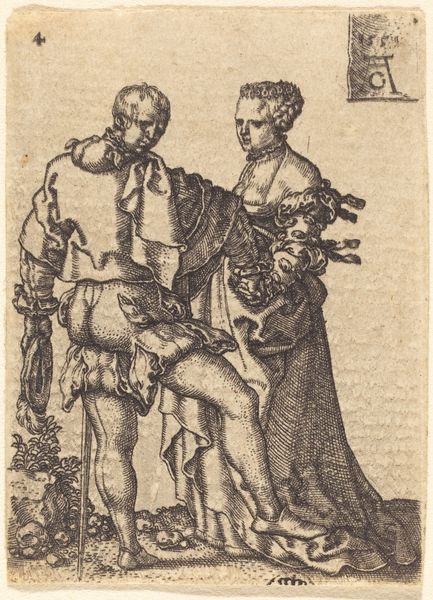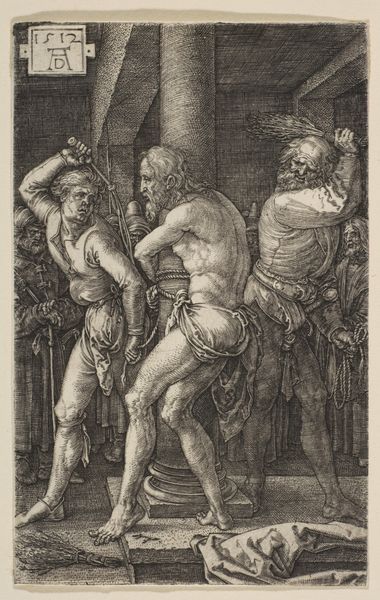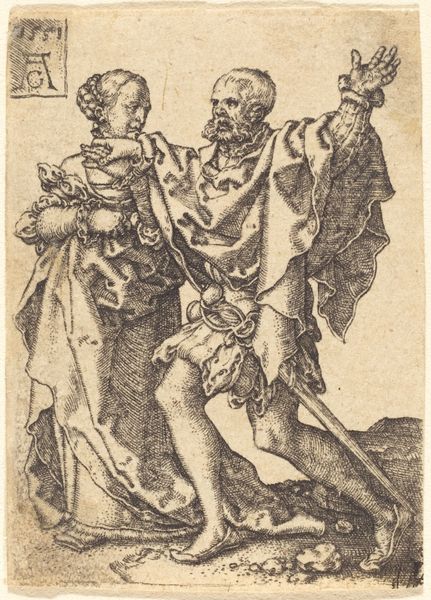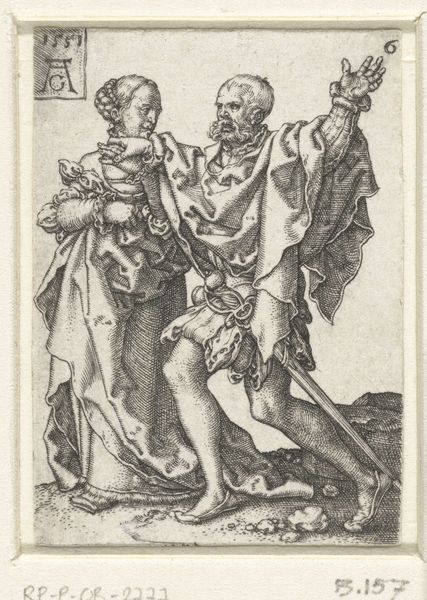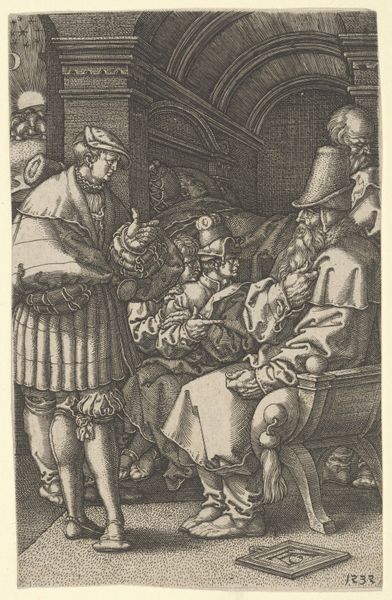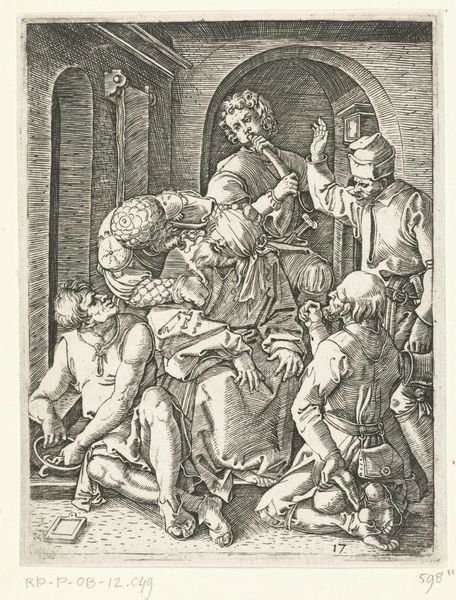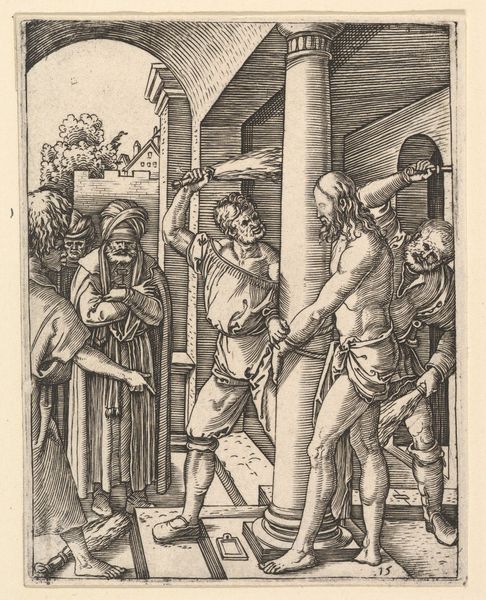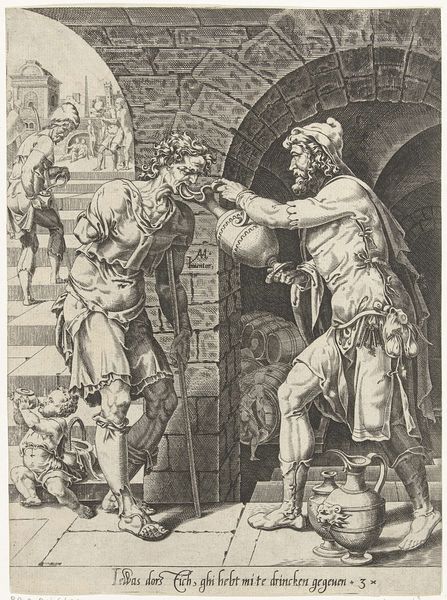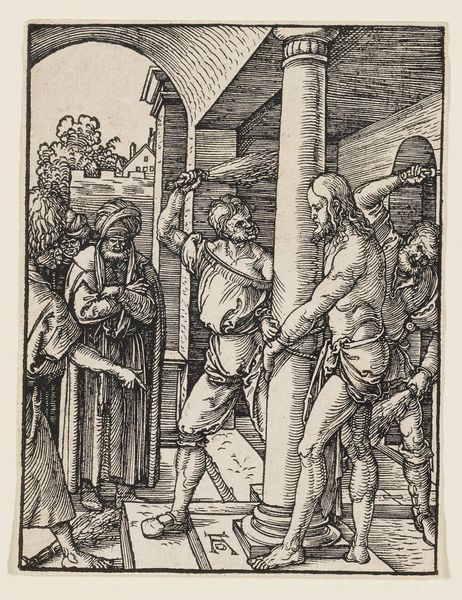
print, engraving
# print
#
mannerism
#
history-painting
#
nude
#
engraving
Copyright: National Gallery of Art: CC0 1.0
Editor: We're looking at "Sophonisba," an engraving from 1553 by Heinrich Aldegrever. I’m struck by the contrast: the male figure looks almost… contemporary, while Sophonisba seems pulled from classical antiquity. What's your read on this peculiar mix? Curator: Oh, that disjunction is absolutely delicious! Aldegrever's not just representing a historical event, he's staging a little drama about taste, power, and, let's be honest, the male gaze. I always find prints so interesting, because the medium implies it was designed for much wider consumption. Imagine people debating how much the "queen" was or was not appropriately exposed! Editor: So, the nudity... It's intentional, a talking point? Curator: Absolutely! Notice how Aldegrever positions her: reclining, but not in a pose of relaxed sensuality. There’s tension in her posture, a tragic resolve in drinking the poison. How would it feel knowing you are a pawn and suicide the only choice? Do you feel like Aldegrever is trying to make us sympathize? Editor: I see that tension now. She’s not inviting, but resigned. He has rendered it as almost a formal portrait. A history lesson with, well, some skin. Curator: Precisely! It's Mannerism in a nutshell – elegant distortion for dramatic effect, blending history and fantasy with a slightly cynical wink. I’d argue that, instead of pity, we are intended to see a certain agency. A queen doing what she must do! It makes one wonder what, if any, were Aldegrever's own feelings! Editor: That adds a layer I hadn’t considered, all these possibilities in the hands of an artist making a historical point. Curator: Indeed. It really makes one consider who history is "for"!
Comments
No comments
Be the first to comment and join the conversation on the ultimate creative platform.

